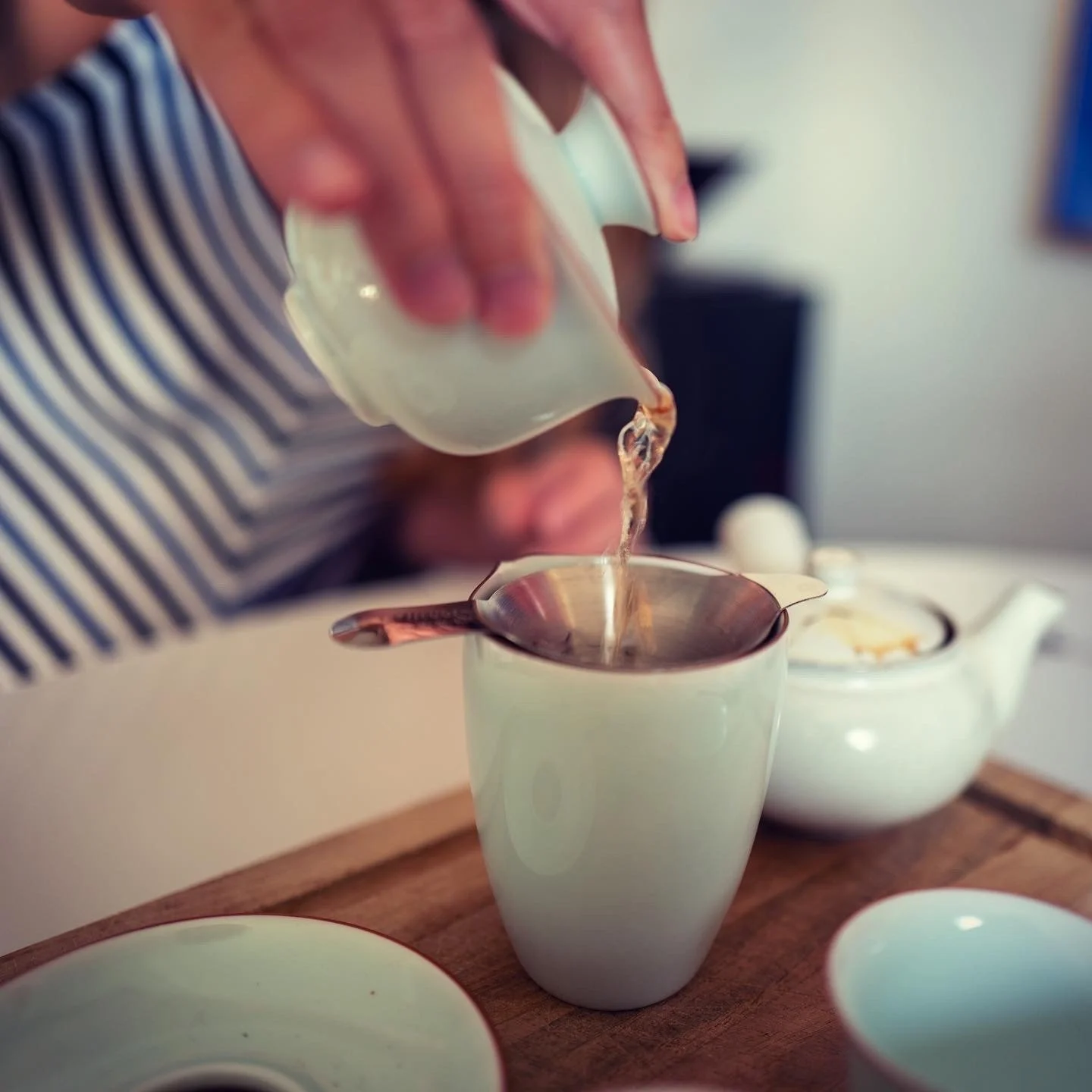Introduction to Tea
Like many, my journey with tea started with tea bags. First with teaspoons of sugar and, overtime, I grew to prefer the unaccompanied flavor of the leaves. I knew there was green and black tea, although I did not understand the difference between them. I did not know the variations in flavor that could be found between one green tea and the next. I hadn’t yet discovered the wonders of yellow, white, oolong and puerh teas. I hadn’t experienced the difference of loose leaf tea or brewing in a gaiwan teapot.
The more I tasted and the more I read about tea the more abundantly clear it became that I was only scratching the surface of this incredible world. Each path illuminated another area yet to be explored and revealed the possibility of a lifelong journey with tea.
If you are new to loose leaf tea or tea in general, this is a brief guide to get you started. However, I encourage you to keep exploring and trying new teas in your own way. There are many instructions about the correct way to brew tea - the best water temperature and brewing time - and while useful I recommend using these guidelines as a jumping off point for you to discover what you enjoy most. After all, that is really the point of drinking tea.
Tea Types: Black, Oolong, Green, Yellow, White and Puerh
All tea is made from the same plant - Camellia Sinensis. The main difference between each type is the oxidation level. Think about the browning of an apple when it is cut open - this is oxidation. The same happens to tea after it is plucked. The longer the oxidation time the darker the tea will be. White tea is the least oxidized, followed by yellow, green, oolong and black. Puerh is slightly different in that the leaves are fermented.
Further, within each type of tea you will experience a variety of flavors. For example, one green tea may taste of salty seaweed while another may have notes of creamy milk and yet another tastes of smoky charcoal fire. These differences are created by both the environment where the tea is grown and method of processing.
The other category of tea you will hear about is herbal tea, also known as tisane. These infusions are in fact not tea as they are made from herbs, flowers, fruits or roots instead of the Camellia Sinensis plant. However, they are delicious in their own right and can have unique benefits.
Brewing Loose Leaf Teas
There are a few factors to consider when brewing loose leaf tea: brewing vessel, water temperature, amount of leaves, brewing time and the number of times you re-steep. Think of each factor as an opportunity for experimentation.
Brewing Vessel
There are a number of vessels to choose from, each with their own benefits. Some offer a quick way to brew on the go while others allow for a relaxing tea session among friends or as part of a solo meditative practice. I like to switch between styles to fit my tea mood. Here are some of my favorite teaware:
Images from top left to bottom right: gaiwan tea set and tray, gaiwan and fairness cup with strainer, travel infuser, french press, kyusu teapot, and cup strainer.
Water Temperature
There is a recommended water temperature for each kind of tea but feel free to play with this a bit. Everyone has their own preferences and you will notice different flavor profiles with the same tea depending on the water temperature.
Amount of Leaves and Brewing Time
These two elements will vary based on the brewing style you choose: western or gong fu. The western style uses fewer leaves and brews for a longer time, around 2 grams of tea per 8 oz of water with a 3-5 minute steeping time. Gong fu style uses a smaller vessel (such as a gaiwan) with more leaves, approximately 4-6 grams, but a quick brewing time of 15-30 seconds.
Re-steeping
The number of times you can resteep depends on a couple factors. First is the tea itself. Many flavored teas only hold up for one or two steeps. A pearl green tea on the other hand is meant to be re-steeped multiple times, allowing for the leaves to unfurl with each steep. The second factor is the brewing style. Western style brewing that uses less tea leaves and steeps for a longer period of time will not produce as many opportunities for re-steeping as shorter gong fu style brewing.
The flavor profile of some teas will change with each steep, bringing out previously hidden elements along the way. As you experiment with each tea, keep in mind that the water temperature for subsequent brews does not need to be as warm as the initial steep since the leaves have already started to open up. You may also need to steep for longer to achieve the same strength over time.
To continue your tea journey, check out some of the other posts on Lagom Infusions and follow us on Instagram @LagomInfusions.







